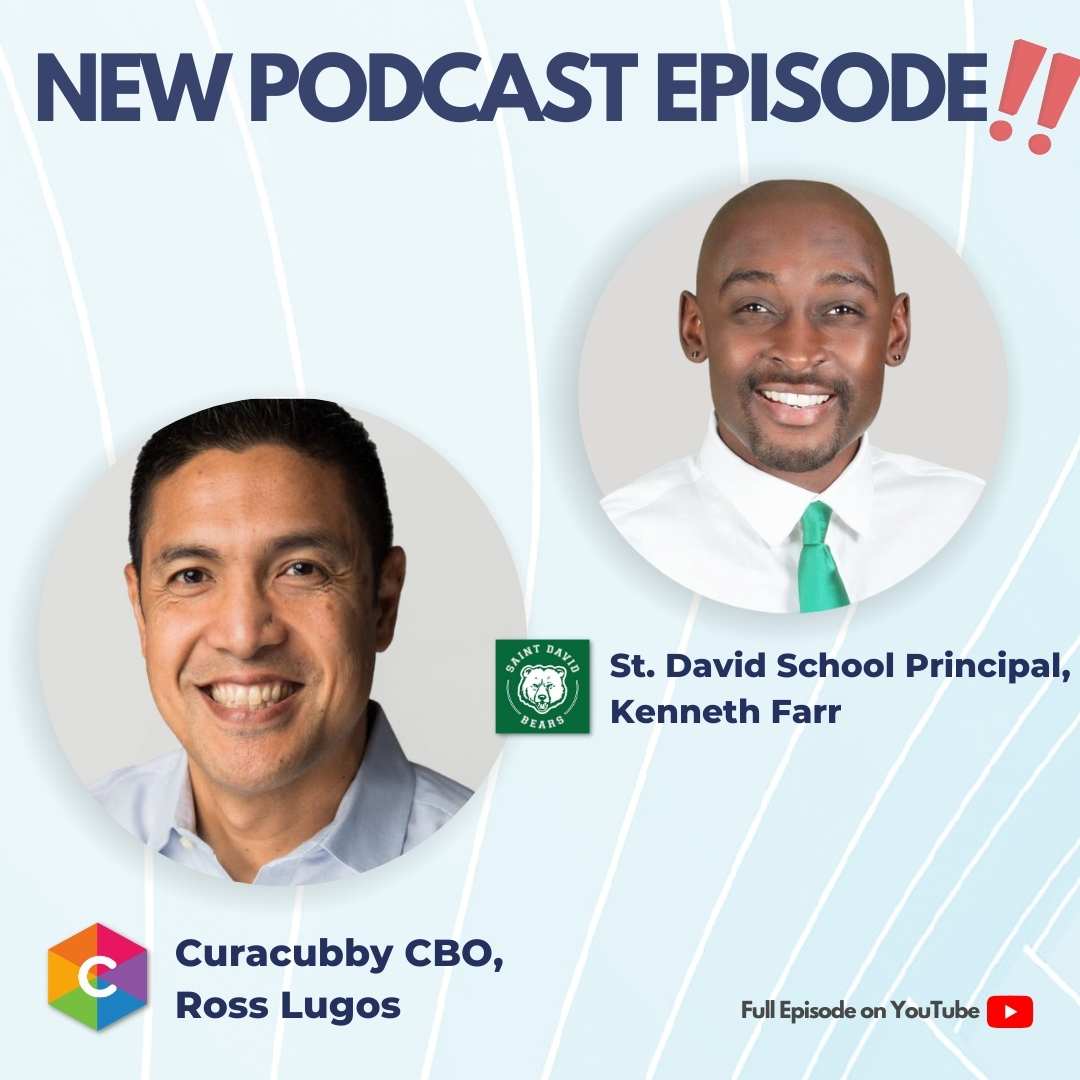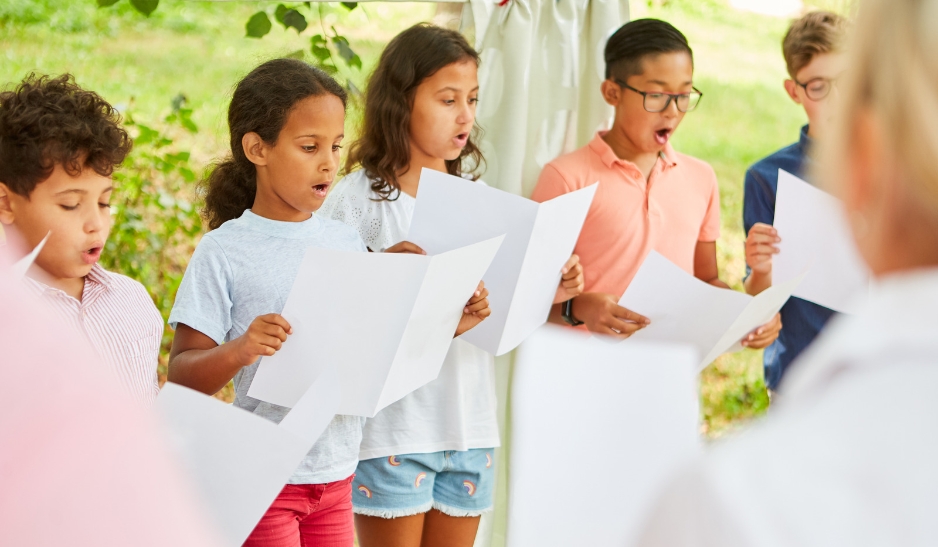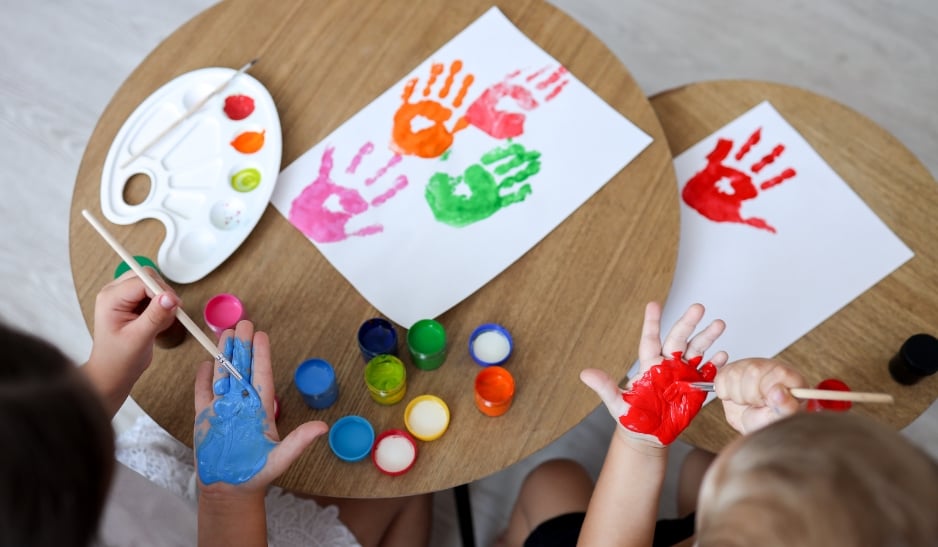8 Art & Music Activities for Afterschool Programs to Foster Creativity

8 Art & Music Activities for Afterschool Programs to Foster Creativity
Creativity is a cornerstone of education, a catalyst that propels innovation and problem-solving. It sparks curiosity, nurturing a lifelong love for learning and exploration. However, the typical school curriculum tends to prioritize core academic subjects. This approach can limit the scope for creative exploration, an aspect that's crucial for children's cognitive and emotional development.
This is where afterschool programs come into the picture. These programs provide an invaluable platform for fostering creativity and diversifying the learning experience. Art and music activities, in particular, offer a perfect blend of fun and learning, nurturing various learning styles and encouraging children to think outside the box. They help children break free from the confines of textbooks, engaging them in an immersive, hands-on learning experience that's as educational as it's entertaining.
Benefits of Integrating Art & Music into Afterschool Programs
Art and music activities are not just supplementary leisure pursuits; they are integral elements of a comprehensive educational experience. These activities stimulate cognitive development, encourage emotional expression, and foster teamwork, catering to a range of learning styles and honing critical thinking skills.
Art and music play a vital role in developing creative thinking and problem-solving skills. Children engaged in art or music projects often encounter situations that require them to come up with unique solutions. These situations help children practice lateral thinking, a skill that will serve them well not just in their academic pursuits but also in real-world scenarios.
These creative activities also provide a much-needed outlet for emotional expression. Art and music enable children to explore and express their feelings, concepts, and experiences that they might struggle to articulate otherwise. By encouraging emotional expression, these activities contribute to mental health promotion and emotional literacy. Furthermore, many of these activities involve group work, which can help children build social skills, promote cooperation, and cultivate a sense of belonging. Lastly, research supports the claim that participation in art and music activities can boost academic performance. It's therefore clear that integrating these activities into afterschool programs can have wide-reaching benefits for children's holistic development.
4 Art Activities for Afterschool Programs
The world of art offers a wealth of opportunities for children to express their creativity and develop valuable skills. Here are four engaging art activities that can be incorporated into afterschool programs: Collaborative Murals encourage teamwork and thematic storytelling; Origami develops patience, precision, and an understanding of complex instructions; Pottery and Sculpting engage children's fine motor skills while introducing them to 3D forms; Collage Making stimulates creativity and decision-making, allowing children to explore texture, color, and composition.
- Collaborative Murals: Murals are large-scale art projects that foster teamwork and creativity. Through this activity, children explore different design techniques, color theory, and thematic storytelling, promoting critical thinking and collaborative learning styles.
- Origami: This ancient Japanese art form is more than folding paper. Origami teaches children precision, patience, and the ability to follow complex instructions. It also enhances spatial reasoning and mathematical concepts, proving that art and academics can blend seamlessly.
- Pottery and Sculpting: Hands-on and engaging, pottery and sculpting activities can help children develop fine motor skills and understand 3D shapes and forms. It also encourages children's creativity and innovation, allowing them to see a piece of art evolve from a lump of clay.
- Collage Making: Collages are an excellent medium for self-expression and imagination. Children can create a collage from magazine cut-outs, photographs, or fabric scraps, thereby exploring texture, color, and composition. This activity fosters creativity, decision-making, and critical thinking.
Each of these activities presents unique opportunities for creativity and learning. From the collective efforts of creating a mural to the meticulousness required for origami; from the tactile satisfaction of pottery and sculpting to the imaginative freedom of collage making, these activities foster a broad range of skills and offer different ways to engage children's creativity. In each of these art activities, children can find a creative outlet that resonates with them, sparking a lifelong passion for the arts.
4 Music Activities for Afterschool Programs
Music holds a unique power to connect and inspire, making it an invaluable part of any afterschool program. We have four engaging music activities to consider: Group Sing-along or Choir fosters teamwork and a broader appreciation of various musical styles; Make Your Own Instruments combines learning about music and physics in a fun, hands-on way; Music Composition Workshop challenges children to create their own melodies and rhythms; Exploring Different Genres and Cultures through Music broadens children's horizons, fostering cultural appreciation and understanding.
- Group Sing-along or Choir: Music brings people together. Group sing-alongs or choir activities can help children improve their listening skills, understand harmony, and work as a team. It's a fun, engaging way to introduce children to various musical genres and cultures.
- Make Your Own Instruments: Building instruments fosters a deep understanding of music and physics. By creating their own instruments from household objects, children learn about different sound mechanisms, encouraging exploration and innovation.
- Music Composition Workshop: A step beyond simply playing music, composition workshops stimulate creativity, critical thinking, and a deeper understanding of musical elements. They promote the integration of different learning styles - auditory, kinesthetic, and visual.
- Explore Different Genres and Cultures through Music: Music transcends borders and cultures, and introducing children to world music can broaden their horizons and foster cultural appreciation and understanding.

These activities form a comprehensive approach to music education, offering a well-rounded experience that goes beyond merely learning to play an instrument. Sing-alongs and choir activities foster teamwork and cultural appreciation, making your own instruments introduces the physics of sound, and composition workshops offer a deeper understanding of music theory. Meanwhile, exploring different genres and cultures through music helps broaden children's musical horizons and fosters understanding and respect for global cultures. Each activity serves as a stepping stone towards fostering a deeper love and understanding of music.
Breathing Life into Art and Music: Practical Implementation Strategies
Successfully integrating art and music activities into afterschool programs requires careful planning and an inclusive approach. The first step is ensuring diversity and inclusivity in these activities. They should be designed to engage various learning styles, cater to different ability levels, and celebrate cultural diversity. The aim is to create a safe, welcoming environment where all children can explore their creativity without inhibition.
The next step is to encourage child-led creativity. Instead of guiding children towards specific outcomes, let them lead the way with their unique ideas and innovative approaches. This fosters independent thought and bolsters critical thinking. Providing constructive feedback and ensuring that these activities can be adapted to suit different age groups are also vital for an enriching and engaging experience.
Conclusion
The integration of art and music activities in afterschool programs can do much more than keep children engaged. They have the potential to ignite creativity, cultivate essential life skills, and foster an appreciation for cultural diversity. To realize these benefits, however, educators and program leaders must be strategic and adaptable, creating experiences that cater to diverse learning styles and encourage children to lead their creative journeys.
When it comes to the smooth and efficient management of these programs, Curacubby can be your trusted partner. Our platform can streamline the administrative aspects of your afterschool programs, freeing up more time for you to focus on what matters most: nurturing creativity and inspiring young minds. By choosing Curacubby, you're not just choosing an efficient management tool; you're choosing a partner committed to enhancing the holistic development of children. Together, we can ensure that afterschool programs continue to be a space for creativity, exploration, and growth.









